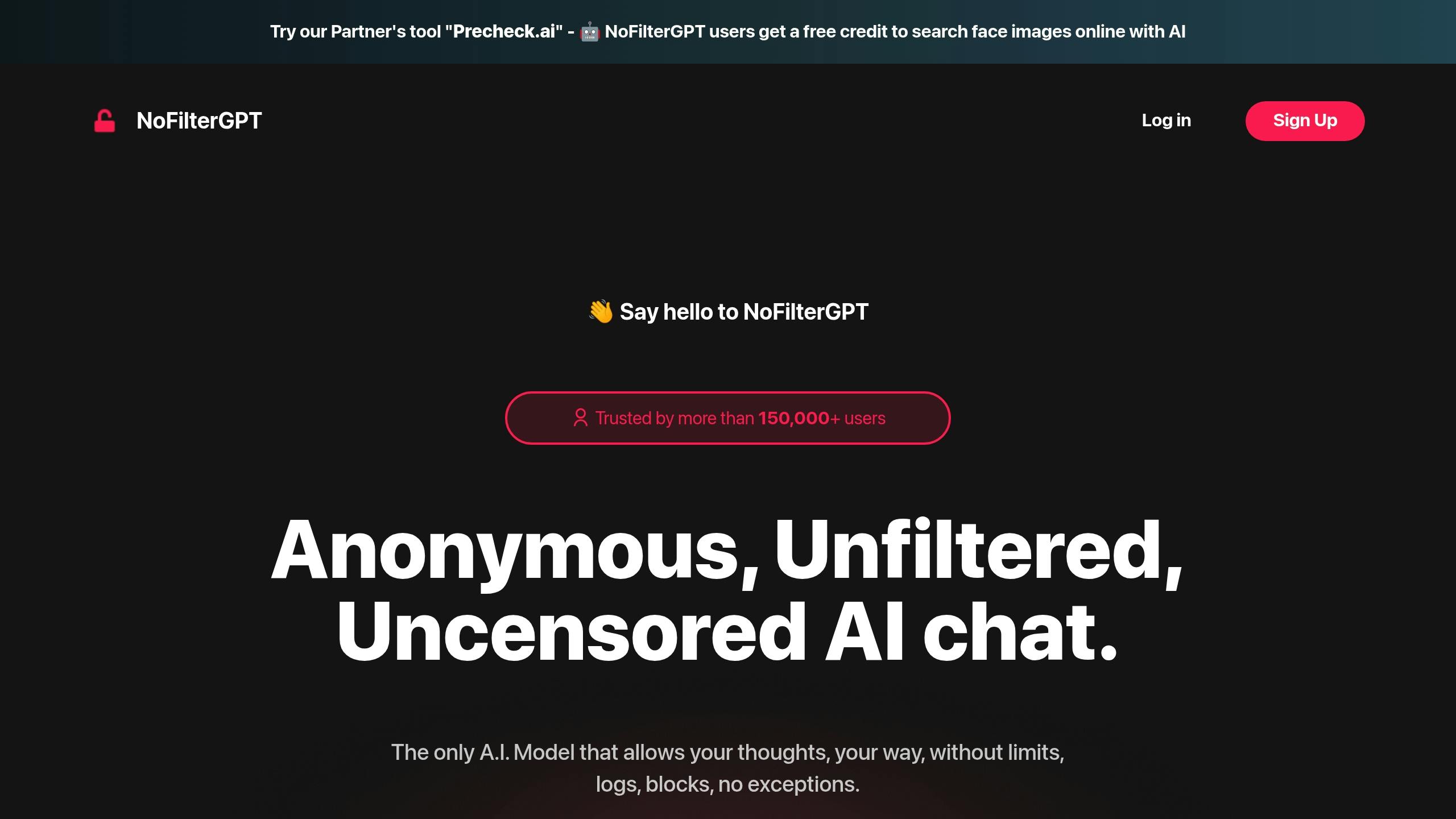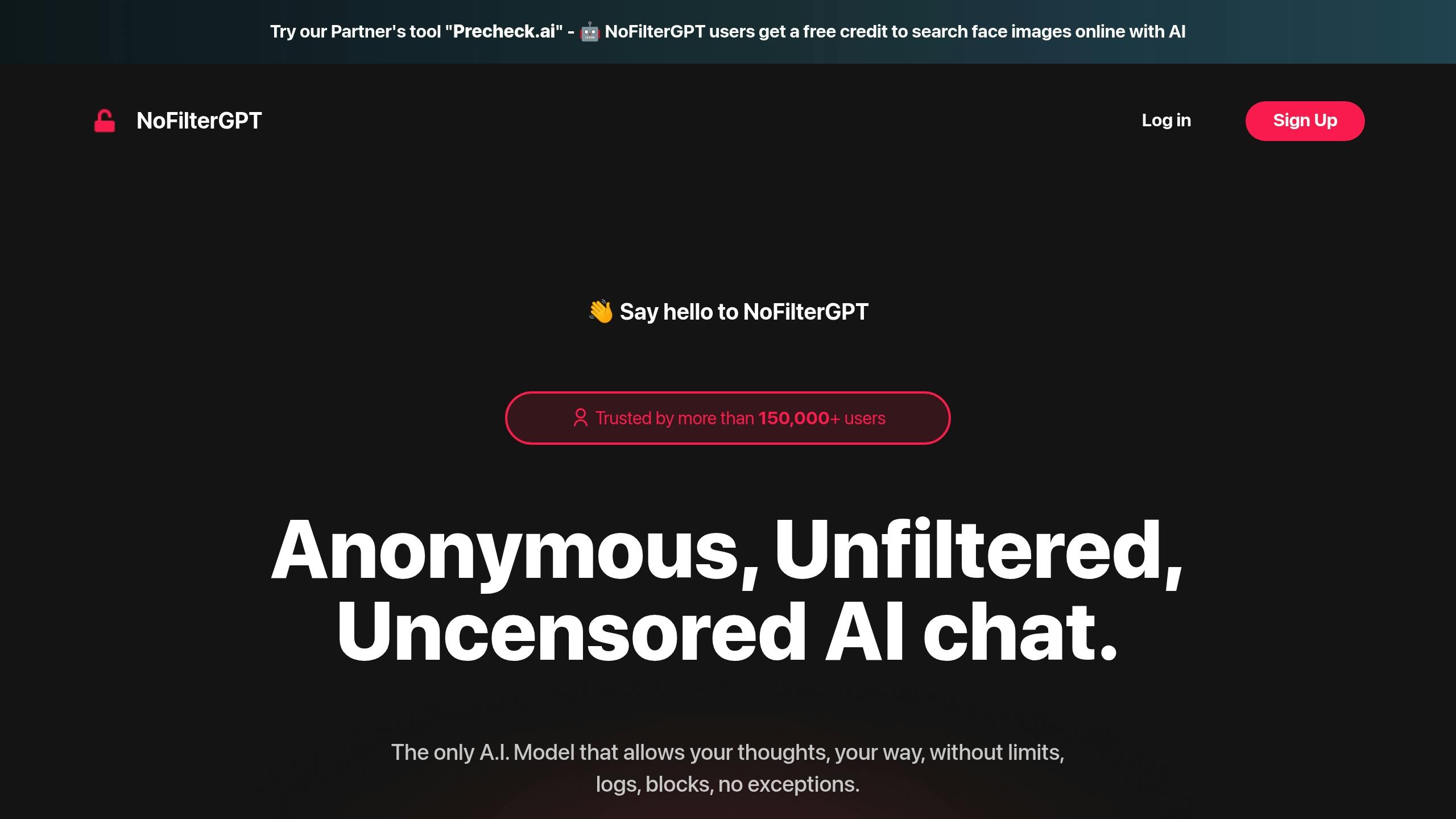Understanding Uncensored AI
In the realm of artificial intelligence, Uncensored AI refers to systems and technologies that operate without restrictions on content, allowing for the free flow of information and data. These AI systems are designed to process and analyze data without filtering or censoring based on predefined criteria.
What is Uncensored AI?
Uncensored AI encompasses AI algorithms and models that are not programmed to restrict or control the information they process. Unlike traditional AI systems that may filter content based on predefined rules or guidelines, Uncensored AI operates with a more open approach, allowing for a broader range of data inputs and outputs.
Importance of Uncensored AI in Today’s World
In today’s rapidly evolving digital landscape, the role of Uncensored AI is becoming increasingly significant. By embracing Uncensored AI technologies, organizations and individuals can harness the full potential of artificial intelligence without limitations on information access or expression.
The unrestricted nature of Uncensored AI promotes transparency, diversity of perspectives, and the free exchange of ideas. This unrestricted flow of information can lead to enhanced innovation, creativity, and problem-solving capabilities in various fields, including research, business, and social interactions.
As the demand for unbiased and transparent AI solutions grows, the importance of Uncensored AI in promoting freedom of expression and fostering a culture of openness and inclusivity cannot be overstated. By leveraging Uncensored AI technologies, society can explore new horizons in AI development while upholding ethical standards and respecting individual rights and freedoms.
Censorship in Artificial Intelligence
When exploring the realm of artificial intelligence (AI), the concept of censorship plays a significant role in shaping the information flow and content accessibility within AI systems. Understanding the nuances of censorship in AI is crucial for grasping its impact on various aspects of society.
Overview of Censorship in AI
Censorship in AI refers to the practice of restricting or controlling the dissemination of information or content by AI systems. This can involve filtering out specific data, blocking certain keywords, or regulating the output of AI algorithms to align with predefined guidelines or regulations. The goal of censorship in AI is often to manage the quality and appropriateness of content, protect user privacy, and comply with legal requirements.
One common application of censorship in AI is in content moderation on social media platforms. AI algorithms are used to detect and filter out inappropriate or harmful content, such as hate speech, violence, or misinformation. By implementing censorship mechanisms, AI systems aim to create a safer and more regulated online environment for users.
Challenges and Controversies
Despite its intended benefits, censorship in AI is not without its challenges and controversies. One of the primary concerns is the potential for over-censorship, where AI algorithms may mistakenly flag or block legitimate content due to inaccuracies or biases in the system. This can lead to the suppression of free speech and the stifling of diverse viewpoints.
Moreover, the lack of transparency in AI censorship algorithms raises questions about accountability and fairness. Users may not always understand why certain content is censored or filtered, leading to a lack of trust in the AI systems responsible for content moderation. Additionally, the subjective nature of censorship decisions can result in inconsistencies and discrepancies in how content is regulated across different platforms.
Navigating the complexities of censorship in AI requires a delicate balance between upholding ethical standards, protecting user interests, and promoting freedom of expression. By addressing the challenges and controversies surrounding AI censorship, stakeholders can work towards developing more transparent, accountable, and inclusive AI systems that prioritize the well-being and rights of users.
Filtering and Keyword Blocking
In the realm of Uncensored AI, filtering mechanisms play a crucial role in determining the content that users are exposed to. Understanding how filtering works in AI and the impact of keyword blocking is essential in comprehending the dynamics of information dissemination in the digital age.
How Filtering Works in AI
Filtering in AI involves the use of algorithms and machine learning models to analyze and categorize content based on predefined criteria. These criteria can range from explicit keywords to more complex patterns of language and context. By processing vast amounts of data at high speeds, AI filtering technology can swiftly identify and sort content according to specified parameters.
One common approach to filtering in AI is through the use of neural networks, which are trained to recognize patterns and make decisions based on input data. These networks can be fine-tuned to filter out undesirable content, such as hate speech, explicit material, or misinformation. By continuously learning and adapting, AI filtering tools can enhance their accuracy and efficiency over time.
Impact of Keyword Blocking
Keyword blocking is a specific form of content filtering that focuses on identifying and restricting access to content containing certain keywords or phrases. This method is often employed to prevent the dissemination of harmful or inappropriate material and to maintain a safe online environment.
The impact of keyword blocking in AI can be significant, as it directly influences the type of content that users are exposed to. While keyword blocking can help mitigate the spread of harmful content, it also raises concerns about censorship and the restriction of free expression. Balancing the need for content moderation with the preservation of open dialogue and diverse perspectives is a complex challenge faced by developers and policymakers in the field of AI censorship algorithms.
By delving into the mechanisms of filtering and keyword blocking in AI, we gain insight into the intricate processes that shape our digital experiences. As AI continues to evolve and play a central role in content moderation, understanding the nuances of these technologies is essential for navigating the complexities of the digital landscape. For more information on AI censorship and filtering, explore our article on ai censorship algorithms.
Advantages of Uncensored AI
Exploring the benefits of uncensored artificial intelligence (AI) reveals significant advantages that contribute to the evolution of technology and society. Two key advantages of uncensored AI are the promotion of freedom of expression and the stimulation of innovation and creativity.
Freedom of Expression
Uncensored AI plays a pivotal role in upholding freedom of expression by allowing individuals to share diverse perspectives, opinions, and ideas without the constraints of censorship. By enabling unrestricted communication and information dissemination, uncensored AI empowers individuals to express themselves authentically and engage in open dialogue on various topics.
The absence of censorship in AI systems fosters a democratic environment where individuals can freely express their thoughts, challenge existing norms, and participate in constructive debates. This freedom of expression not only enhances individual autonomy but also promotes cultural diversity and intellectual exchange in the digital realm.
Innovation and Creativity
Uncensored AI serves as a catalyst for innovation and creativity by providing a platform for unrestricted exploration and experimentation. By removing barriers to information access and content creation, uncensored AI encourages individuals to think outside the box, explore unconventional ideas, and push the boundaries of traditional thinking.
In an uncensored AI environment, innovators and creators have the freedom to develop groundbreaking technologies, artistic expressions, and solutions to complex problems without fear of censorship or restriction. This creative freedom fuels a culture of innovation, drives technological advancements, and inspires new possibilities across various industries and disciplines.
The advantages of uncensored AI extend beyond individual empowerment to encompass societal progress, cultural enrichment, and technological advancement. By embracing freedom of expression and fostering innovation and creativity, uncensored AI paves the way for a more dynamic, inclusive, and vibrant digital landscape that thrives on diversity of thought and unrestricted exploration.
Ethical Considerations
When delving into the realm of uncensored AI, it is imperative to address the ethical considerations surrounding this technology. Two key aspects that warrant attention are privacy concerns and the potential for bias and discrimination in uncensored AI systems.
Privacy Concerns
Privacy has become a paramount issue in the age of advanced technologies like AI. Uncensored AI raises significant privacy concerns as it operates without the traditional filters or restrictions that may safeguard sensitive information. The unrestricted access to data and the potential for misuse pose a threat to individuals’ privacy rights.
To mitigate privacy risks associated with uncensored AI, it is essential to implement robust data protection measures, encryption protocols, and transparency practices. By ensuring that user data is handled responsibly and ethically, the negative impact on privacy can be minimized. For more insights on AI and privacy, refer to our article on artificial intelligence censorship.
Bias and Discrimination in Uncensored AI
Another critical ethical consideration in uncensored AI is the prevalence of bias and discrimination within AI systems. Without proper oversight and regulation, uncensored AI algorithms may inadvertently perpetuate biases present in the data used for training. This can lead to discriminatory outcomes, reinforcing existing societal inequalities.
Addressing bias and discrimination in uncensored AI requires a multifaceted approach that includes diverse representation in AI development teams, rigorous testing for bias, and ongoing monitoring of AI systems for discriminatory patterns. By actively working to identify and rectify biases, the potential for harm can be reduced, and AI systems can be designed to promote fairness and equity.
Understanding and addressing privacy concerns and bias and discrimination are crucial steps in ensuring that uncensored AI is developed and deployed responsibly. By prioritizing ethical considerations and actively working to mitigate potential risks, the transformative power of AI can be harnessed for the greater good of society.
The Future of Uncensored AI
As technology continues to advance, the future of uncensored AI holds significant implications for various industries and society as a whole. Understanding the trends and developments in this field is crucial to anticipate the potential impacts on society.
Trends and Developments
The evolution of uncensored AI is marked by several key trends and developments that are shaping the landscape of artificial intelligence. One prominent trend is the increasing focus on developing AI systems that prioritize transparency and accountability. This shift towards more transparent AI algorithms aims to enhance trust and understanding of how AI systems make decisions.
Another notable trend is the integration of ethical considerations into the design and deployment of AI technologies. As concerns around privacy, bias, and discrimination in AI continue to grow, there is a concerted effort to develop frameworks and guidelines that promote ethical AI practices. These developments are essential for ensuring that AI technologies are deployed responsibly and in a manner that upholds societal values.
Furthermore, advancements in AI filtering technology are enabling more sophisticated content moderation and censorship algorithms. These tools play a crucial role in identifying and filtering out harmful or inappropriate content, thereby safeguarding users from potentially harmful online experiences. The continuous refinement of AI filtering tools is expected to enhance the effectiveness of content moderation efforts across various online platforms.
Potential Impacts on Society
The proliferation of uncensored AI has the potential to bring about significant impacts on society, both positive and negative. On the positive side, uncensored AI can foster greater freedom of expression by enabling individuals to share their thoughts and ideas without fear of censorship. This freedom can lead to increased innovation and creativity as individuals are empowered to explore new concepts and push boundaries.
However, the widespread adoption of uncensored AI also raises concerns regarding privacy, bias, and discrimination. The use of AI algorithms to filter and moderate content may inadvertently infringe on individuals’ privacy rights by monitoring and controlling their online activities. Moreover, the presence of bias in AI algorithms can perpetuate existing inequalities and reinforce discriminatory practices, posing ethical challenges that need to be addressed.
As society grapples with the implications of uncensored AI, it is essential to strike a balance between leveraging the benefits of AI technologies and mitigating the potential risks. By staying informed about the latest trends and developments in uncensored AI and actively engaging in discussions around ethical considerations, individuals can contribute to shaping a future where AI technologies are used responsibly and ethically.



